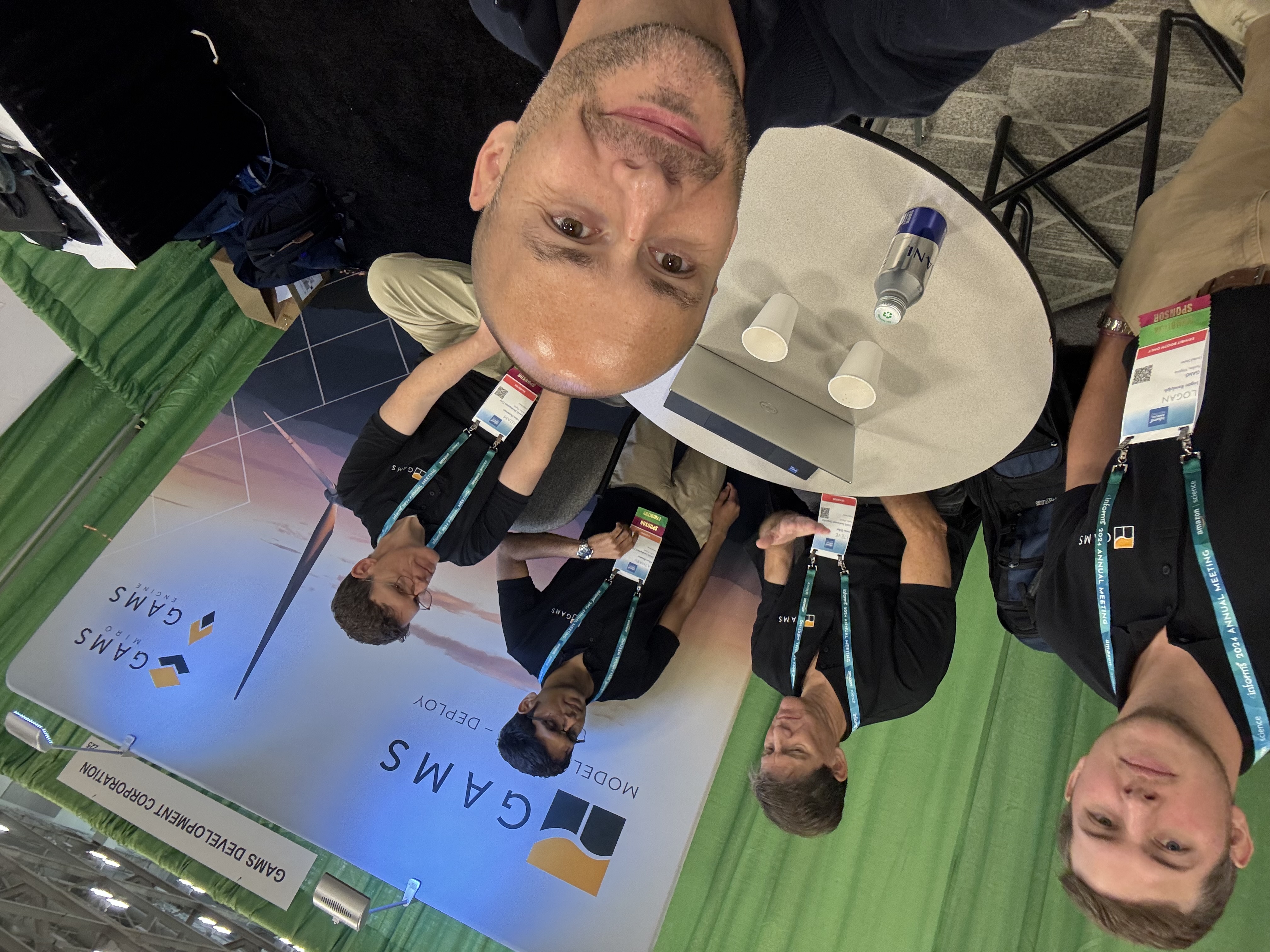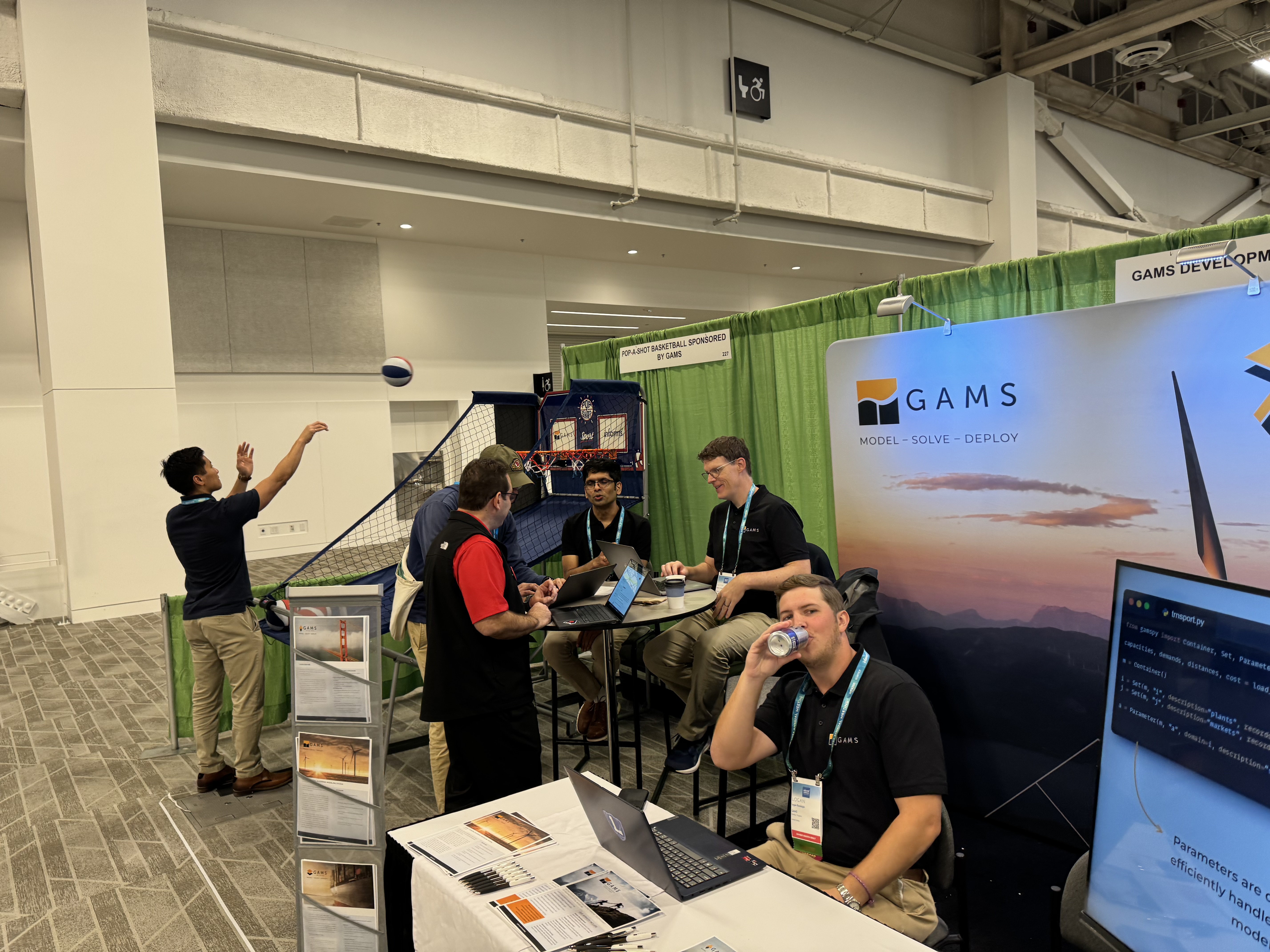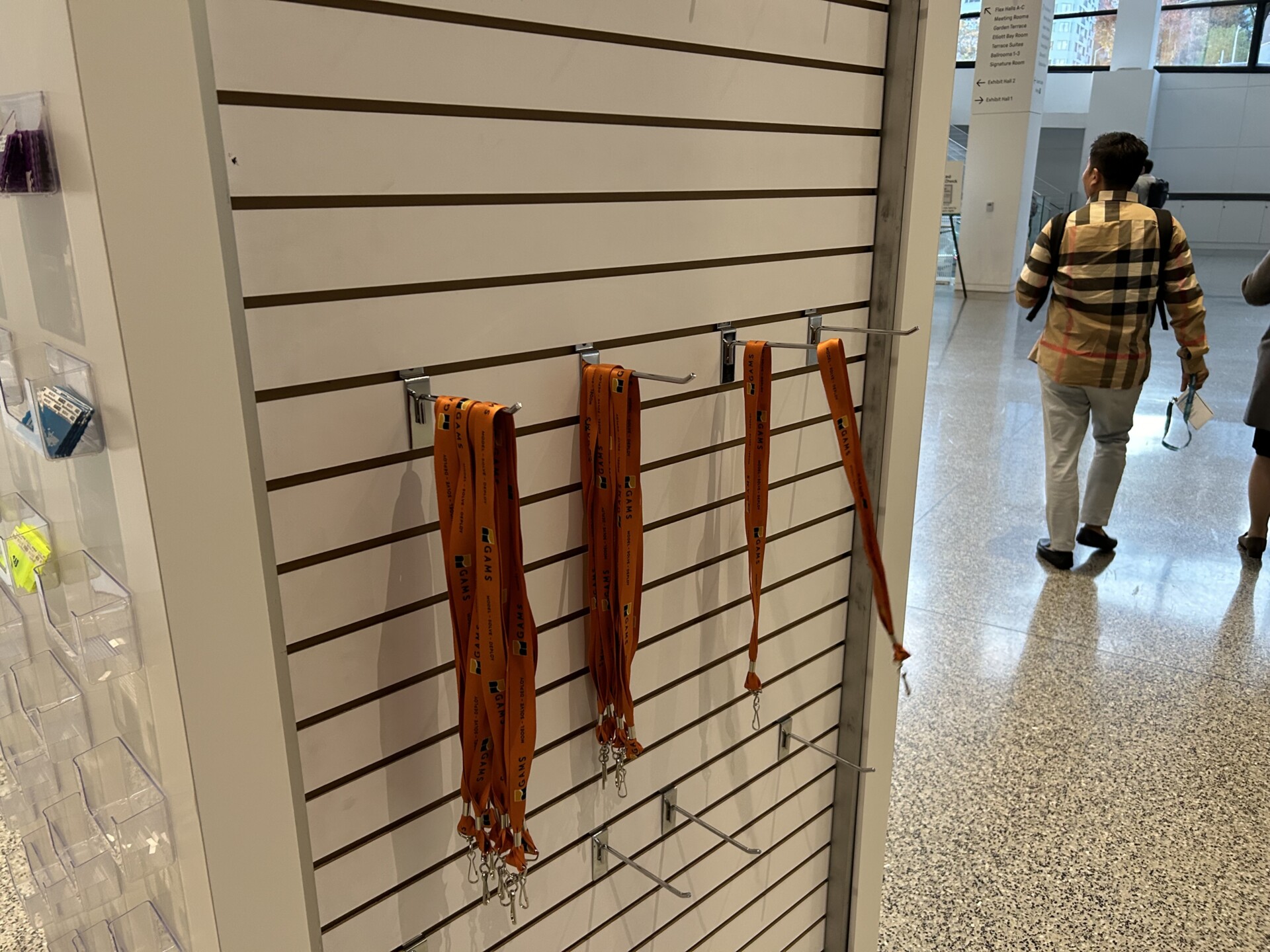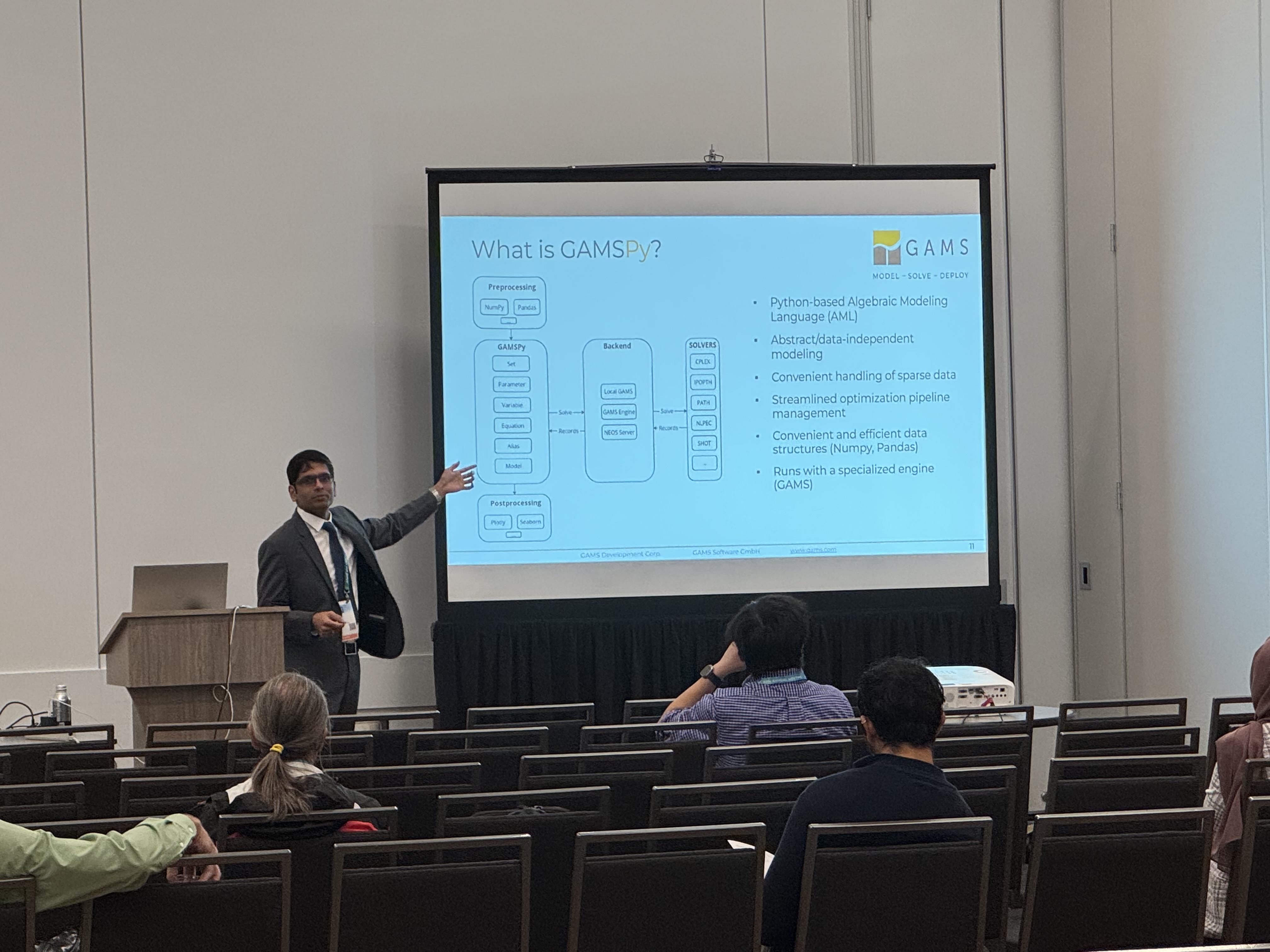GAMS at INFORMS Annual Meeting 2024 in Seattle: A Recap
GAMS was happy to be part of this year’s INFORMS Annual meeting, sharing insights and connecting with the optimization community.
We had a fantastic time meeting so many enthusiastic professionals and students, exchanging ideas on how GAMS technology can simplify complex modeling tasks and enhance project workflows. A big shoutout to everyone who stopped by our booth, took a shot at the basketball hoop, and inspiring conversations!
Thank you for making this event memorable, and we look forward to many more exciting collaborations!

This year, GAMS was excited to participate with a technical showcase, an engaging workshop, and an interactive booth experience that provided plenty of opportunities for knowledge sharing, networking, and a bit of friendly competition!
Our time at INFORMS 2024 was invaluable, allowing us to interact with users, introduce the latest in GAMS technology, and engage with the vibrant optimization community. We’re happy to have shared our advancements in GAMSPy and data integration and look forward to seeing how attendees apply these capabilities to their projects.

If you missed us in Seattle, stay tuned for more updates, where we’ll continue to dive deeper into how GAMS can support your optimization journey!




Sign up for our general information newsletter to stay up-to-date!
Our Abstracts
Our GAMS Exhibitor Workshop:
GAMSPy and Data APIs for streamlining optimization
by Atharv Bhosekar and Adam Christensen
GAMS (General Algebraic Modeling System) is an algebraic modeling language that provides users a way to write optimization models using intuitive algebraic syntax. However, as optimization becomes an integrated step within larger decision-making pipelines, modelers face two significant challenges: (1) the inconvenience of switching out of a preferred programming language (such as Python) solely for optimization purposes, and (2) the difficulty of efficiently transferring data between GAMS and other tools and platforms within a diverse software ecosystem.
In this presentation, we will tackle these challenges using our latest solutions. First, we will present GAMSPy, our new product that brings algebraic modeling capabilities to Python. GAMSPy allows users to enjoy an intuitive algebraic syntax without compromising on the performance. We will also highlight our suite of data APIs to streamline data exchange with GAMS. In particular, we will focus on GAMS Transfer, a data API that enables users of R, MATLAB, and Python to efficiently read, modify, analyze, and write GAMS data.These tools significantly enhance the interoperability of GAMS within multi-platform decision pipelines, facilitating smoother and more efficient optimization workflows.
Our GAMS Technology Showcase:
Optimization pipeline design: from data curation to algebraic modeling with GAMSPy
by Atharv Bhosekar and Adam Christensen
Algebraic modeling languages (AMLs) have been a cornerstone in the fields of optimization and economics. These tools are popular because they are able to effortlessly link the worlds of algebra and computer science – that is, the syntax of the AML closely approximates that of handwritten algebra but its execution is automated and scalable. AMLs, by design, are not general purpose programming languages; as a result, it can be difficult to gather, clean and prepare data for a modeling environment. Recent years have seen sophisticated data science tools enter the mainstream. Languages such as Python and R can leverage Numpy/Pandas and Shiny/Tidyverse/Dplyr to efficiently work with large data in deployable environments. Modern infrastructure tools such as Docker and Kubernetes make it possible to isolate workflows and scale compute resources via cloud platforms. All of these compute resources mean that data assets are arriving at optimization model instances from an ever diversifying number of start points. In this workshop we present a Python package called GAMSPy that leverages modern data science tools with the flexible nature of Python to construct a powerful Python-AML. This presentation will cover a number of real-world inspired examples that illustrate how to bring data into an environment and effectively clean it for use in an optimization model.
Check our presentation slides for more information:
| Name: | Size / byte: | |
|---|---|---|
| 11039958 | ||
| 11691753 |

